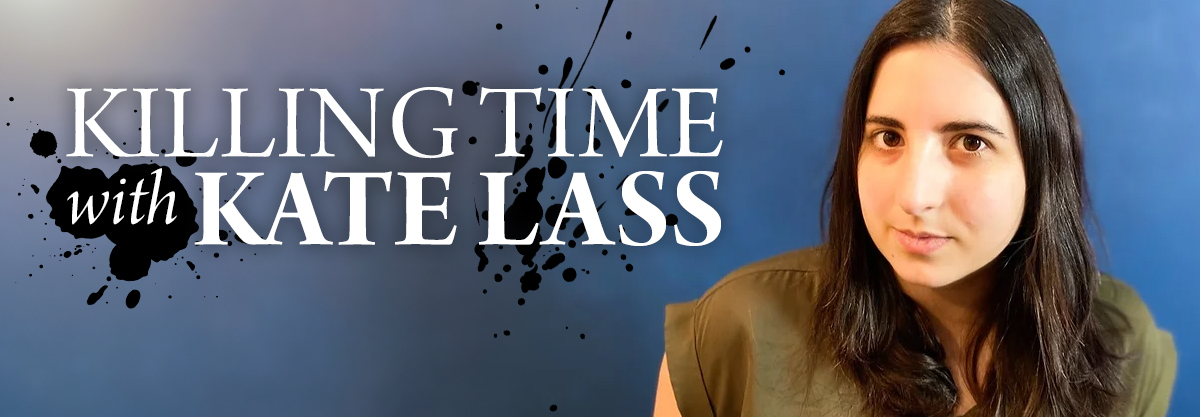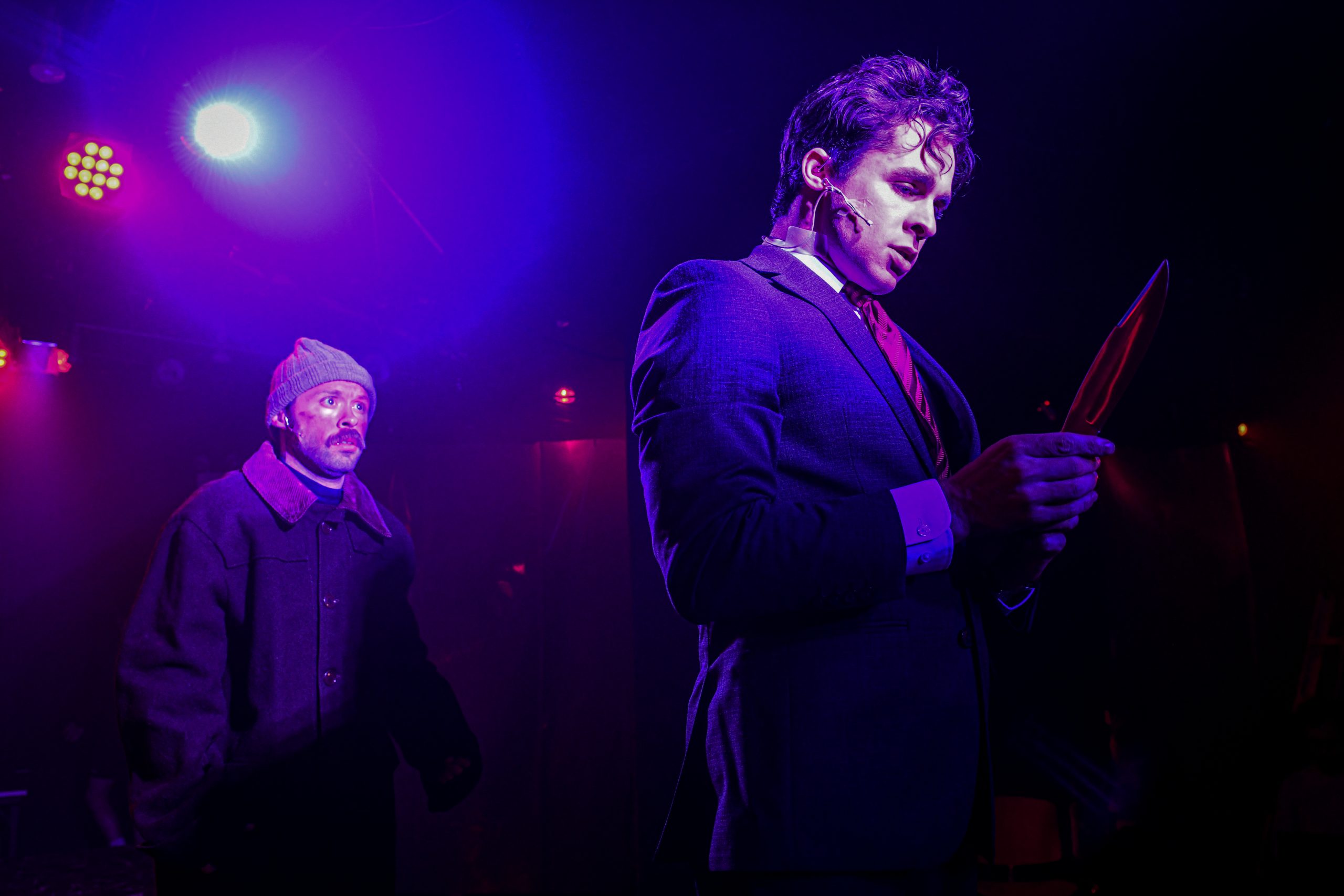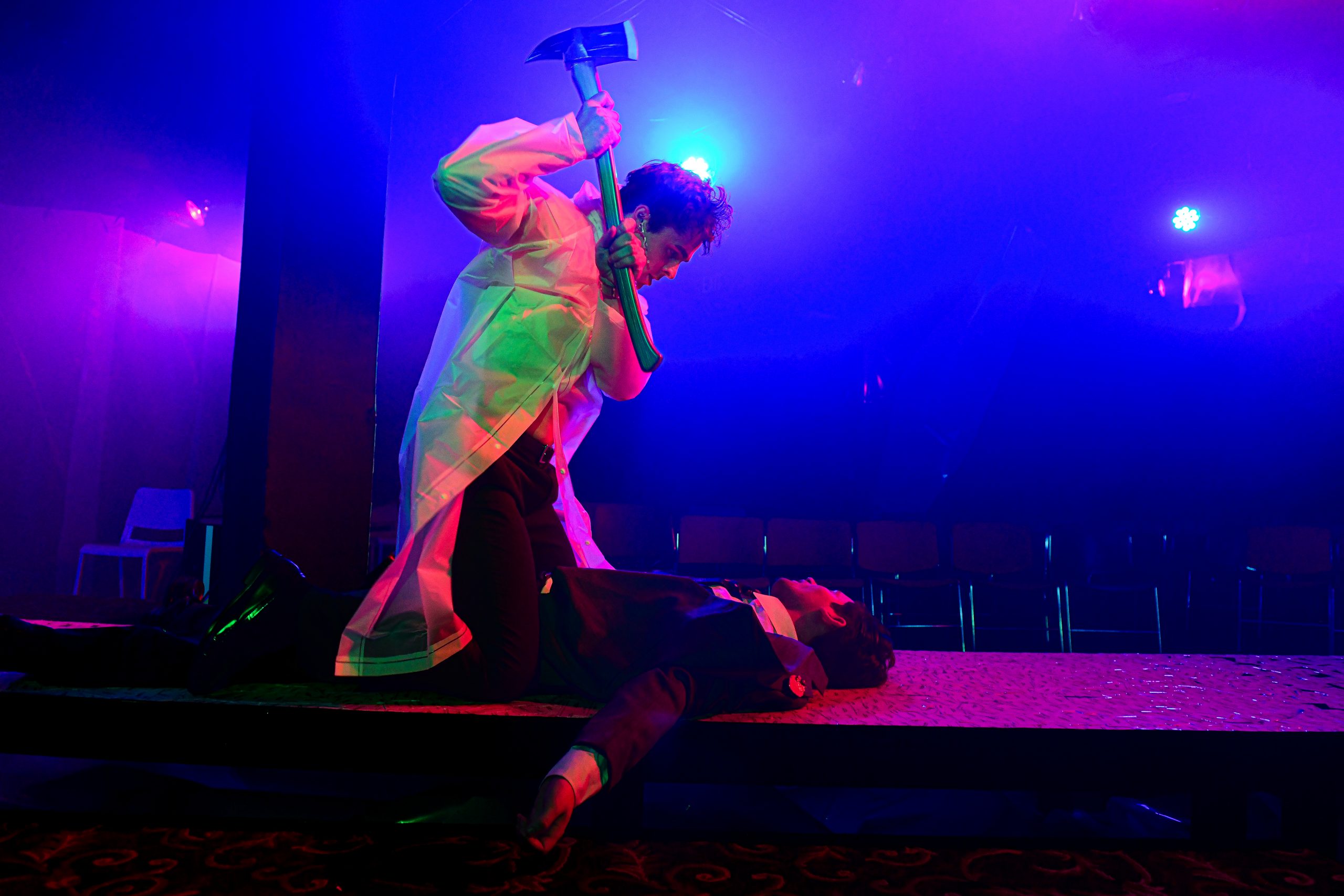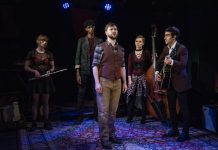
AMERICAN PSYCHO is a sleek and stylish musical, based on the best-selling novel by Bret Easton Ellis and set in the epicenter of excess. It also has one of the most infamous axe scenes this side of The Shining. To talk all things glam, guts and gore, we caught a moment with the amazing Kate Lass (she/her), whose fight choreography is integral to ensuring we all have a safe and bloody good time.
Tell us a bit about you! How did you get started?
I took my first stage combat class in 2011. I was an acting major at Columbia College Chicago, which has a robust stage combat program. I graduated with certifications in every weapon offered by the Society of American Fight Directors, a minor in stage combat, and my first bit of choreography experience.
Since then, I have choreographed and taught stage combat all over Chicago and around the country. And I’ve continued to train with stage combat teachers from around the world. It’s very important to me that I keep learning and growing. I’ve seen the art form grow and shift even in the time I’ve been a part of it, so I want to continue to learn in order to bring the best work I can into my classrooms and rehearsal rooms.
What is your preferred title? Thinking about the range of billing from Fight Choreographer to Violence Designer. What do you prefer and why?
My go-to is always Fight Choreographer. I tend to go with Choreographer because it highlights the fact that I’m directing movement, but I’m fine with Fight Director too because there is definitely an acting element to performing fights as well.
I have a friend who always says that designers work with things, while directors and choreographers work with people, and I can get on board with that broad definition.

In your words, what does a fight choreographer do?
In the simplest terms, we choreograph moments of violence on stage.
Of course, there’s more to it than that. I have choreographed sword fights and knife fights and ax murders, but I’ve also choreographed falls and rolls. When choreographing larger moments, I’ll have a lot of conversations throughout the process. I’ll find out what the director wants: How long is the fight? Is it brutal or more stylized? What is the story arc? I come into the rehearsal room with a vague idea of the shape of the fight, but I also want input from the director and the actors. I take into account what they think their characters would do, their own physical abilities, and any blocking they have already worked into the scene. As I’m shaping the fights themselves, my first question is the story we want to tell and the actions we want to show. It’s then my job to make sure the actors can perform those actions in a way that is safe and sells the story to the audience.
What is the mark of good fight work? What should the audience be feeling or seeing?
It depends!
If a show is meant to be gritty and realistic, the fights might feel a little uncomfortable. They might make you squirm in your chair. If it’s supposed to be brutal and bombastic, you might be shocked. If the show is a comedy, and the audience isn’t supposed to actually fear for the characters on stage, the fights should support that. People can laugh at Sir Andrew in Twelfth Night, but they probably shouldn’t laugh at the end of Hamlet. So as a choreographer, it’s my job to find ways to tell those stories differently, and help the actors understand how their choreography supports that storytelling.
In terms of what the audience is seeing, people often refer to fight choreographers as magicians. I never want an audience to see air between a weapon and a target if the story says they were supposed to touch. So we work in odd angles sometimes to cover all those sightlines. And in cases where a sound has to accompany that impact (which we call “knaps”), I’m distracting the audience’s eyes so they don’t see the magic trick.
What are your top tips for actor safety?
Do it slow now so you can do it quickly later. When you slow down, you can be really controlled and precise about every movement. Sometimes covering those angles requires us to get pretty close to one another. I’d rather see an actor perform a fight at half speed and with all the right placements than at full speed and out of control.
And make sure your weapons are safe to be used on stage!
Any unexpected challenges or surprises in working on a musical? How is it different from other projects you’ve worked on?
Timing! When you have a dance choreographed with eight blank spots for kills, there are pretty specific guidelines you have to follow when choreographing those kills.

Getting into the specifics of American Psycho, any favorite moments or work you’re most proud of? Talk us a bit through the process!
I was very excited to do this show, and very nervous. Because people know American Psycho, and they know that ax scene.
We spent more time on that fight than any other in the show. We played with the length of the fight, how many hits there would be, how to cover angles, whether there would be blood effects, where on the stage the majority of the fight would happen, and more – mostly while rehearsing with a roll of wrapping paper while we waited for our ax to arrive.
And this is where I’m going to brag about our cast, and especially Mr. Bateman himself, Kyle Patrick. Because the biggest challenge of choreographing for this show was choreographing for the space. Those magic tricks become much trickier when you have to cover angles for audience members seated all around the stage. So we originally staged the ax fight to happen far to one side of our alley, in order to mask what I thought would be open sightlines. But as we got into the space, and I saw how precise Kyle’s work was with the ax, I realized that the seats directly next to the actors, which I initially thought would see nothing but air, were actually the best seats in the house. Those few people were getting the show I wanted everyone to see. So now, every one of those hits happens center stage, where the whole audience can see them.
It has been very exciting bringing the audience in to these moments. In the movie, all you see is an ax and a blood splatter. In our show, you see every hit. You see every hair pull and choke. And you see every way I could think to kill someone with a knife that would work in alley staging.
It’s hard to identify one moment in the show that is my favorite because I got to play with different weapons and different feelings, and every time I watch the show, especially looking at things from different angles, I enjoy different things more every time.
What I can tell you is that my favorite thing about working on this show was the creative collaboration and exploration. I loved working with everyone to create these horrifying stories in the most open and trusting way, and I loved watching the actors become more and more comfortable and take care of each other on that stage every night. I’m very proud of my work in this show, but I’m especially proud of the work they are all doing to make my choreography look good.
Anything else?
Go see American Psycho!! The entire creative team and cast have put so much into this show, and you’re going to have a killer time.
You can see Kate’s work through November 26.





